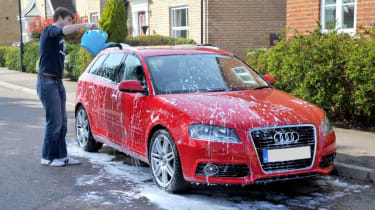How to store a car
If you’re leaving a car unused for a few months, our guide can help you to prepare your vehicle for long-term storage

Many owners of classic or rare cars choose to store their cars for winter or for several months at a time, often to protect them from greasy roads that may be wet, dirty or salty. Exposing an older car to wintry conditions can cause rust and other damage but improper storage can lead to a different set of problems when you take the car out afterwards.
You might also store a car to reduce its mileage in order to protect its value. Far fewer cars are currently in use because all non-essential journeys have been banned under the government’s coronavirus lockdown. For many people, this may mean that their car isn’t used for quite a while.
Best classic cars to buy this year
If you’re able, here are the things you should do to prepare a car before it goes into storage.
Clean and polish the car

It may seem a little strange to spend time making your car sparkle only to hide it away for several months, but leaving dirt, mud, moisture or road salt on your car can lead to corrosion. Read our guides to the best car cleaning tips or the best wax and polish to buy.
Top up fuel, antifreeze and other fluids
Condensation can build up in a fuel tank, so we’d recommend brimming the tank before the car is stored. Adding a fuel preservative is also a good idea if your car won’t be used for a long time. Top up the antifreeze too, and then run the engine for a few minutes to make sure the new fluids are circulated. We’d recommend changing the oil, too, plus the oil and air filters. Another garage staple, WD-40, can be sprayed on unpainted metal underneath your car to prevent rust.
Inflate your tyres
Make sure your tyres are pumped up to the manufacturer’s recommendations before you store your car. If you can, you should raise the car off the ground if it’s going to be off the road for a long time, to prevent flat spots on the tyres. However, we’d only recommend this if your car will be stored inside, as it could be an easy target for alloy wheel thieves if it’s on a driveway.
Avoid use of the handbrake for long-term car storage, particularly for older cars. The handbrake may fuse the brake pads to the discs, so it’s wise to invest in some tyre chocks instead.
Use a smart charger
A smart charger will keep the battery topped up, so you won’t have to fish out the jump leads when you want to drive the car again. It’s good advice to start the car every few weeks and run the engine for a few minutes, even if you’re not planning on going anywhere.
Use car storage covers
Car covers keep dust, debris and small animals away from your car; you don’t want to find that your engine bay has become a wildlife sanctuary while the car was in storage. Just to be safe, stuff clean rags into areas where small creatures may nest, like the exhaust pipe and around the engine bay. Make sure you remember to take them out before you start the car again.
If you’re storing the car outside, make sure the cover is waterproof and secure. Use a soft and stretchy cover instead of a tarpaulin, as the latter could cause paint damage. For inside storage, you should also ensure that the garage or workshop is well ventilated, and a dehumidifier stops moisture affecting your car.
Get a SORN for the car
If you’re not going to be driving the car for a while, you should notify the DVLA that the car is off the road by way of a SORN (Statutory Off-Road Notice). You get an automatic tax refund when you do so and it’s a simple process on the DVLA’s automated phone line. You cannot drive a car when you have a SORN; it needs to be taxed again or you can be fined up to £2,500. Read more in our guide to SORN.
Read our Tips & Advice guides for information on every aspect of buying and running a car.
Most Popular

New Smart #5 Brabus is a 637bhp far cry from the brand’s city car past

Best car leasing deals 2025: this week’s top PCH offers
Tips & advice

Car dashboard warning lights: what does each symbol mean?

Electric car charging stations: public networks, charger types, apps and maps







